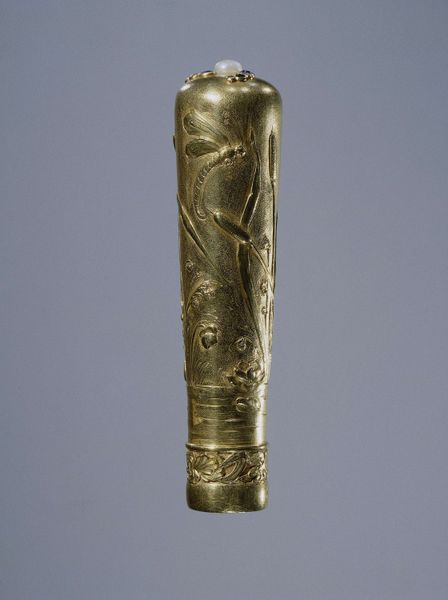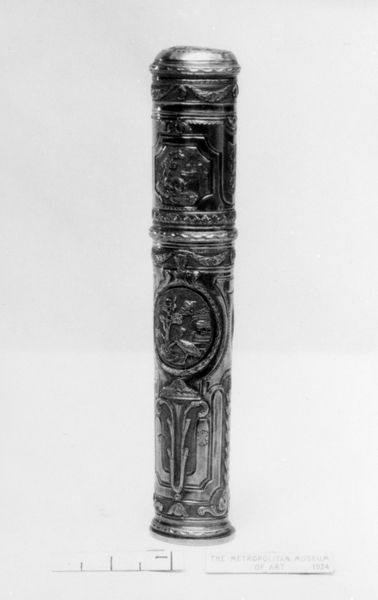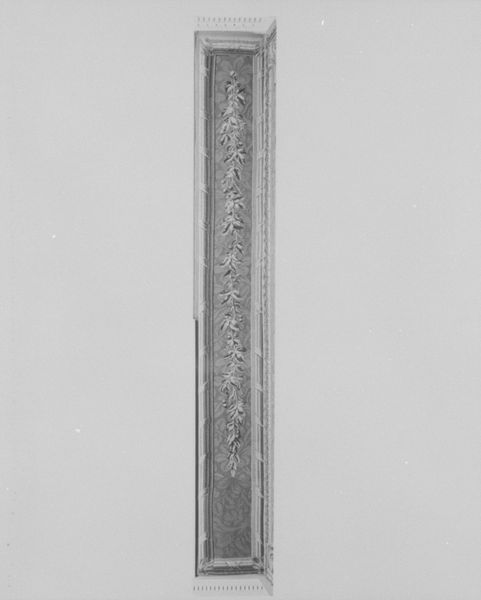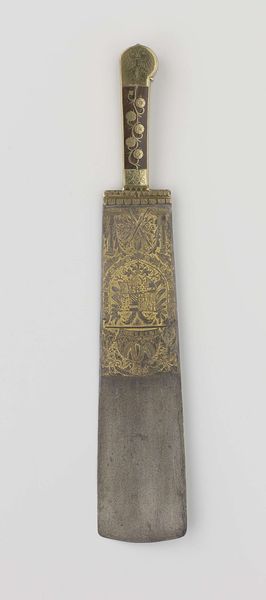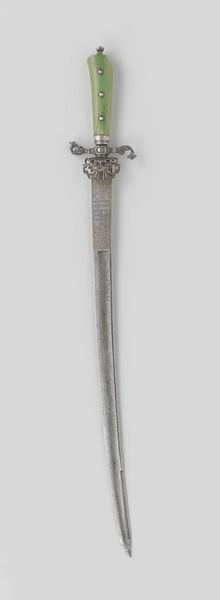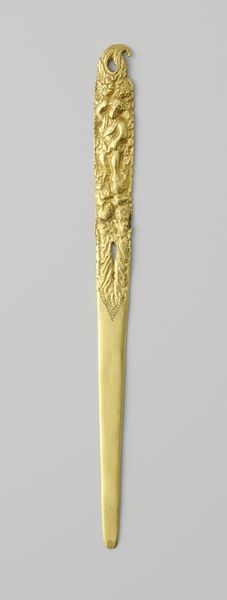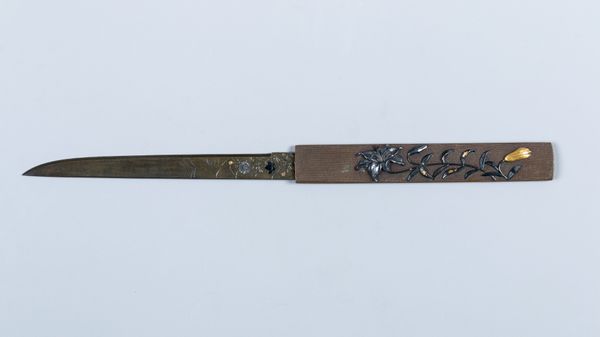
silver, sculpture
#
tree
#
round frame
#
3d sculpting
#
silver
#
wedding photograph
#
animal
#
3d printed part
#
sculpture
#
jewelry design
#
ring
#
sculptural image
#
3d shape
#
stoneware
#
sculpture
#
men
#
decorative-art
Dimensions: Length: 7 1/2 in. (19.1 cm)
Copyright: Public Domain
Editor: This is the "Folding Spoon" crafted between 1700 and 1715 by Johann Adam Boller. It's a stunning piece made of silver, and it's currently housed in the Metropolitan Museum of Art. The detail is incredible. I find it hard to believe it's something to actually *use*...What kind of historical context gives rise to something so ornamental for everyday use? Curator: That’s a fascinating question! Consider the rise of absolutist power in Europe during the late 17th and early 18th centuries. Objects like this spoon were often commissioned to reflect power, wealth and sophisticated taste. It's not necessarily about utility; it is more about displaying the owner’s social status through elaborate design. Have you considered what imagery is included? Editor: I see what look like heraldic crests, foliage and possibly even animals integrated into the design along the handle. Does that suggest anything specific about its original owner or patron? Curator: Absolutely. The crests and animals likely allude to the family lineage or personal symbolism cherished by whoever commissioned it. These spoons acted as conversation pieces, reflecting both family heritage and control over resources necessary to possess it. Editor: So, it was more like a miniature, mobile billboard of status. Thinking about the political climate of the time, it would seem imperative for those aligned with power to demonstrate it, even through dining implements! Curator: Exactly. Everyday objects, especially for the elite, became politicized stages. These details communicated adherence to social hierarchies. Were you aware of sumptuary laws operating at that time in many European countries? Editor: Not deeply, but it does bring into sharp relief the social dimensions and historical function of this "Folding Spoon." Thank you for shedding light on this piece. Curator: My pleasure. Considering the spoon within its historical and cultural context certainly enriches our understanding of art and its powerful relationship with society.
Comments
No comments
Be the first to comment and join the conversation on the ultimate creative platform.

